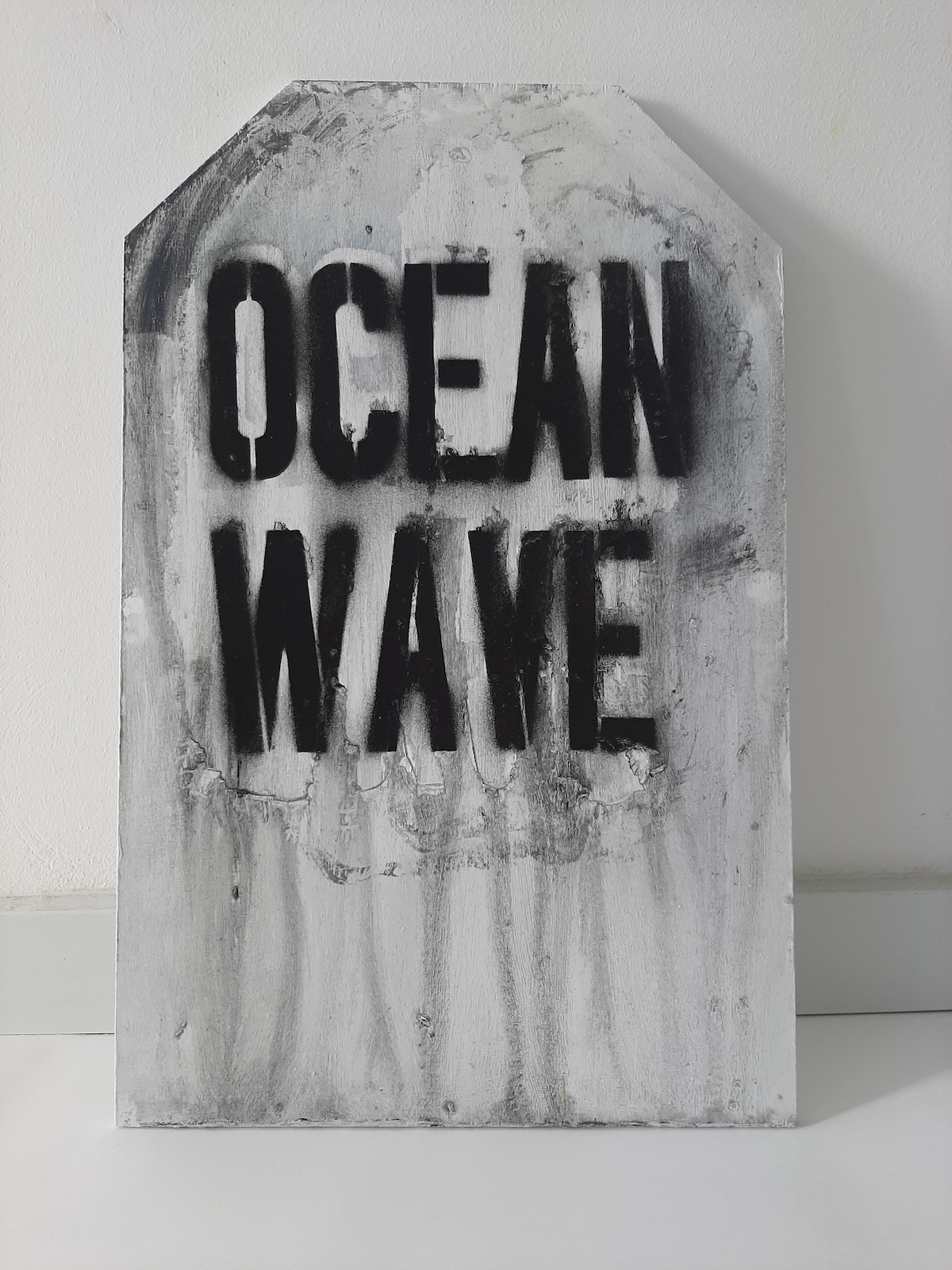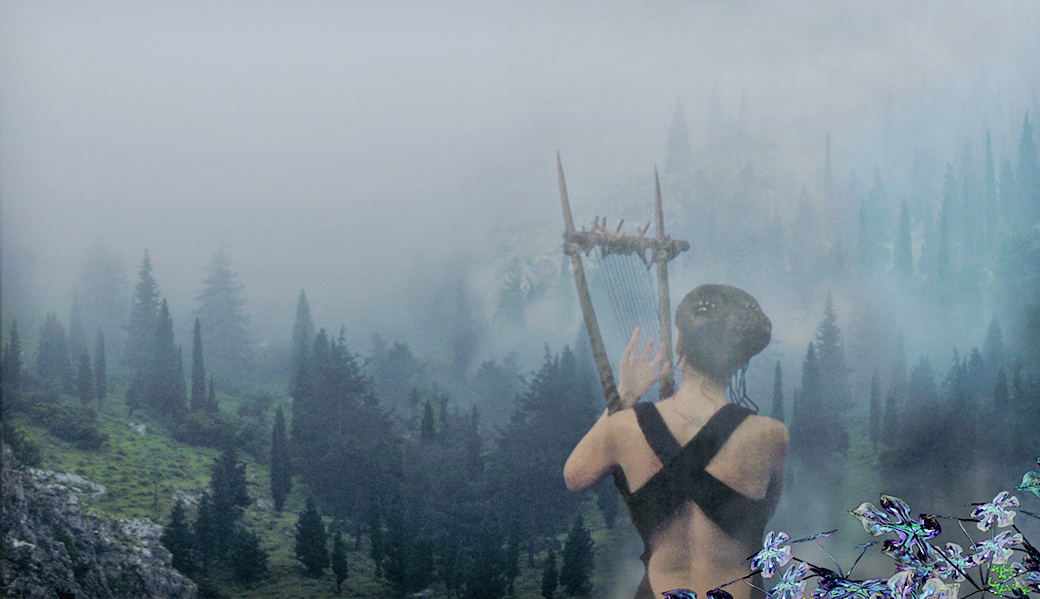Fragments on a quasi "climate neutral" exhibition project
"This essay is a fragment. This is not surprising, since the overwhelming thrust of the overlapping crises that characterize 2020 has turned us from players into pawns. Reality shattered any idea of an anticipated linear future and we look at the fragments that lie before (and behind) us, thinking about what to do next. Whatever we may do in the future, and I am convinced of this, will be closely related to how we answer the following: Where do we stand? Before, in, or after the apocalypse?
Over the past year, I’ve asked many different people this straightforward question, articulated by the French theorist and philosopher Bruno Latour. Its inherent vehemence makes it difficult to answer indirectly or dodge it.

By the way, Mr. Latour answers his own question as follows: “You have to situate yourself in [the apocalypse]. The only position related to the apocalypse is to accept, to open oneself to the revelation which is the real meaning of the word apocalypse. Now is the chance to act. And if you say, ‘well we get by, we probably pass, you guys are overdramatizing,’ [but] we understand nothing of the situation.” He continues, “How much [...] certainty of a catastrophe do [we] have to absorb to get us out of our complacency? So it is a complicated thing. So I would say that we could ignore entirely the question of the apocalypse and that might be a better solution, but we cannot, because at the heart of the indifference for the crisis, the ecological crisis, [...] is something which is connected to the fact of being beyond or after the revelation, so to speak. […]This is why I say, ‘if you say I am an apocalyptic I say yes,’ we need to accept and to explore the importance of this theme even though it leads you to the whole history of religion and history of the western world basically.”1

So does the problem lie in the societal indifference and the subsequent gap between scientific knowledge and socio-economic action, blurring everything when we try to confront an existential problem as a world community? Or does the difficulty arise from the increasing harshness of how this discourse is conducted – the rejection of a fact-based reality by disparate social groups on the one hand, and an increasing lack of understanding and growing impatience on the other?
Every discourse – including an apocalyptic one – is always a narrative structure, and therefore something imaginary. This circumstance can be exploited to send moments of history in a specific direction. At this threshold, probably the most formative period of the 21st century, two very different dreams are facing each other with increasing irreconcilability (those who do not dream or prefer to remain indifferent are excluded): the dark dream of neoliberalism and its techno-fantastic solutionism on the one hand, the desire for a fundamental recalibration and climate-appropriate adaptation of global action systems on the other.
Žižek, of course, here comes Žižek. Who else. Has he written a book about the Covid-19 pandemic yet? I know, I know. But he did utter a few good sentences that I need for a transition now.

Onwards.
Another influential contemporary thinker, the philosopher and cultural critic Slavoj Žižek, recently answered the question “Can one still hope?” in a recent interview with the Berliner Zeitung: “One can hope, but in a paradoxical way! I advocate a courage of hopelessness. If we want to hope, then we should accept that our old life is over. We should invent a new normal. Our basic relationship with reality has changed – how we see the world, how we interact with it. Our relationship with reality has fallen apart radically. The sooner we admit that, the better.”2
At this point, I would like to go even further and make a case for radical hope (incidentally the title of a recent book by the American philosopher Jonathan Lear, which I would like to warmly recommend here).
Aristotle defined courage as finding an appropriate attitude between embarrassment and terror, between cowardice and rashness. And this is where artistic action comes into play. Art has the outstanding ability to transform the past and the present into a forward-looking dimension. It acts – if it is not bound to a specific context or purpose – in a disparate space filled with courage and radical hope. This exhibition is set in this contextual force field, following – and perhaps at the start of another – crazy year, in the unreal surroundings of an ice floe in the European North Sea.
Andreas Templin

I.
Art on the “climate catastrophe” has a subject and a distinct objective; it is committed and eminently political. As such, art on the climate catastrophe is repeatedly criticized as “unfree,” “instrumentalized”, even “agitational,” and this is a procedure that has been used almost reflexively in political art in recent decades. The harsh panning of the last documenta 14, whose concept was decidedly political in nature, followed this same course as well, for example. These critical devaluations are founded on the idea that political art violates two “fundamental bourgeois rules” of “free” art: 1) that it has autonomy, a lack of interest or direct relevance to human social life, to paraphrase the German philosopher of the Enlightenment Immanuel Kant; and 2) it celebrates and emphasizes pure aesthetic form. Especially documenta 14, to stick with this example, deliberately and decisively violated these two basic rules still valid in the (bourgeois) art business, or better: it rebelled, and was accordingly defamed throughout as “agitational,” “third-class,” and “folkloristic.” Crucial in our context is that, as documenta 14 emphasized in its exhibition and its accompanying discursive program, these categories are Eurocentric in nature and serve to discredit political art, as mentioned above, while also asserting modern “Western” art as the only possible art. If one does not play this Eurocentric game, then political art, which has always been part of the canon of Western art (think John Heartfield, Joseph Beuys, General Idea, Martha Rosler...), is of course a wholly legitimate, even necessary form of contemporary art. Goodbye, World, addresses the question: what options do the visual arts have in the face of the climate catastrophe? An attempt at an answer: art can develop creative narratives that warn of the consequences of the catastrophe, it can enlighten and analyze matters of guilt and the impact of climate change, and it can also raise awareness of a different relationship with clearly-not-”our” environment that is no longer focused on natural domination and exploitation. A post-humanist worldview must therefore be asserted in place of anthropocentric hubris!3 Examples of these artistic narratives are demonstratively and voluntarily exposed to the inclinations of climate change in Goodbye World, namely to global warming and the resultant increase of polar melting.

II.
Socio-critical identity politics in combination with feminism and postcolonial theory currently sets the discursive tone across much of the art industry, but the topic of “climate catastrophe” is almost invisible, even in major exhibitions such as documenta in Kassel. This will be the contextual setting for the exhibition project Goodbye, World, which examines why the above social-theoretical agendas are currently so much more prominent in the art industry than the complex of global climate catastrophe. And this notwithstanding the fact that, despite all the urgency of feminism and postcolonial theory, the latter complex is undoubtedly of much greater importance for life and survival on our earth, and this, by the way, not only for the people of any gender or skin color.
As to that, a brief attempt to offer a few answers to this question. 1) Unlike identity-political aesthetics, art of the climate catastrophe offers an opportunity of personification to a much lesser extent. After all, this essentially is a problem that has both perpetrators and victims, and both in huge numbers, but they are not easily subjected to personification at an individual scale. This, however, is precisely what makes strategizing attacks of targeted subjects more difficult, which is what makes identity politics so attractive in terms of their (media) impact. 2) In recent years, a broadly-based academic “theory industry” (Maria do Mar Castro Varela/Nikita Dhawan) has developed around postcolonial theory, which has now also discovered a new field of activity in the art business. The theories surrounding the climate catastrophe, on the other hand, are still at home mostly in the sciences, specifically meteorology and biology, but not in art. And 3), feminism and postcolonialism have the “advantage” that their problems seem comparatively manageable and solvable, while the problems of the climate catastrophe not only appear confusingly far-reaching, incomprehensible and still not fully explored, but also seem to carry in them the blemish of regrettable inevitability. In the art world, all of this seems to be a lasting deterrent against any rigorous engagement with the climate catastrophe.
Raimar Stange
Open Call Exhibition
© apexart 2021
1. Bruno Latour, interview by Barbara Eisenmann, „Vor, während oder nach der Apokalypse? Wo stehen wir heute?,” SWR2 Feature, 4 Dec. 2019 [transcribed from audio].
2. Slavoj Žižek, interview by Tomasz Kurianowicz, “The pandemic is just a rehearsal for the real crisis,” Berliner Zeitung, 01 Dec. 2020.
3. Read more: Raimar Stange, “Art on the climate catastrophe?,” Kunst und Klima = Art and Climate, ed. Raimar Stange, Hemma Schmutz, Gabriele Spindler, (Nuremberg: Katalog Kunstverein Salzburg/Landesgalerie Linz, 2012) p. 13f.

